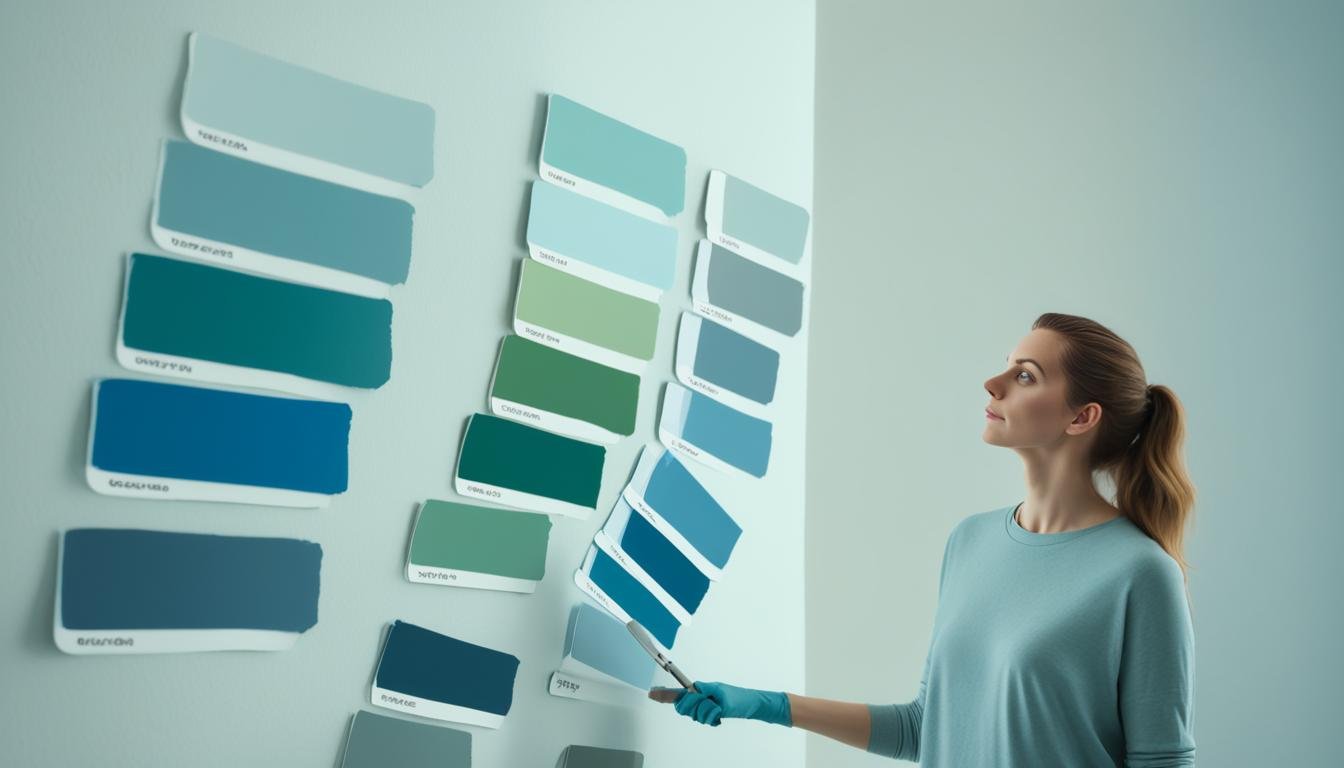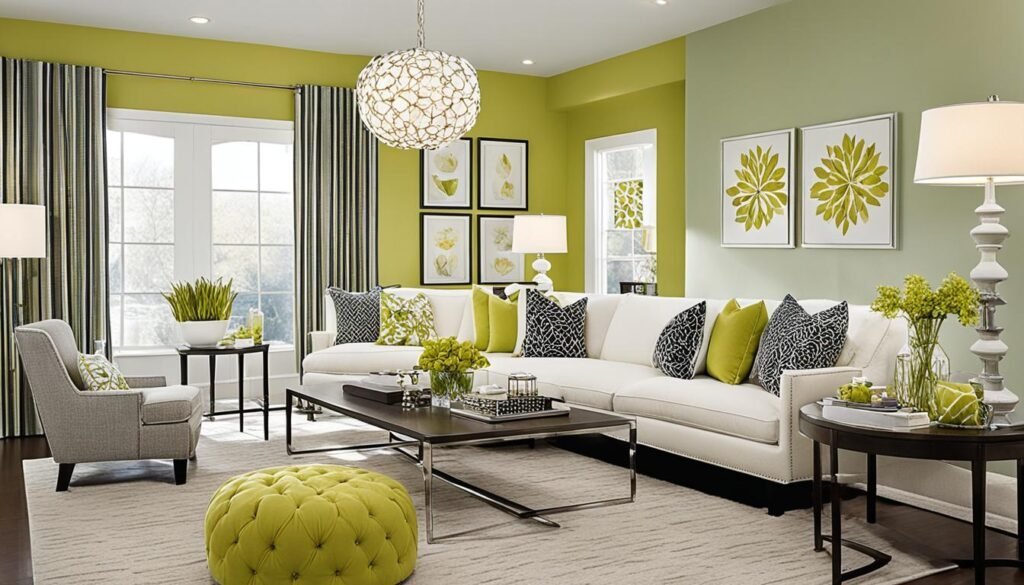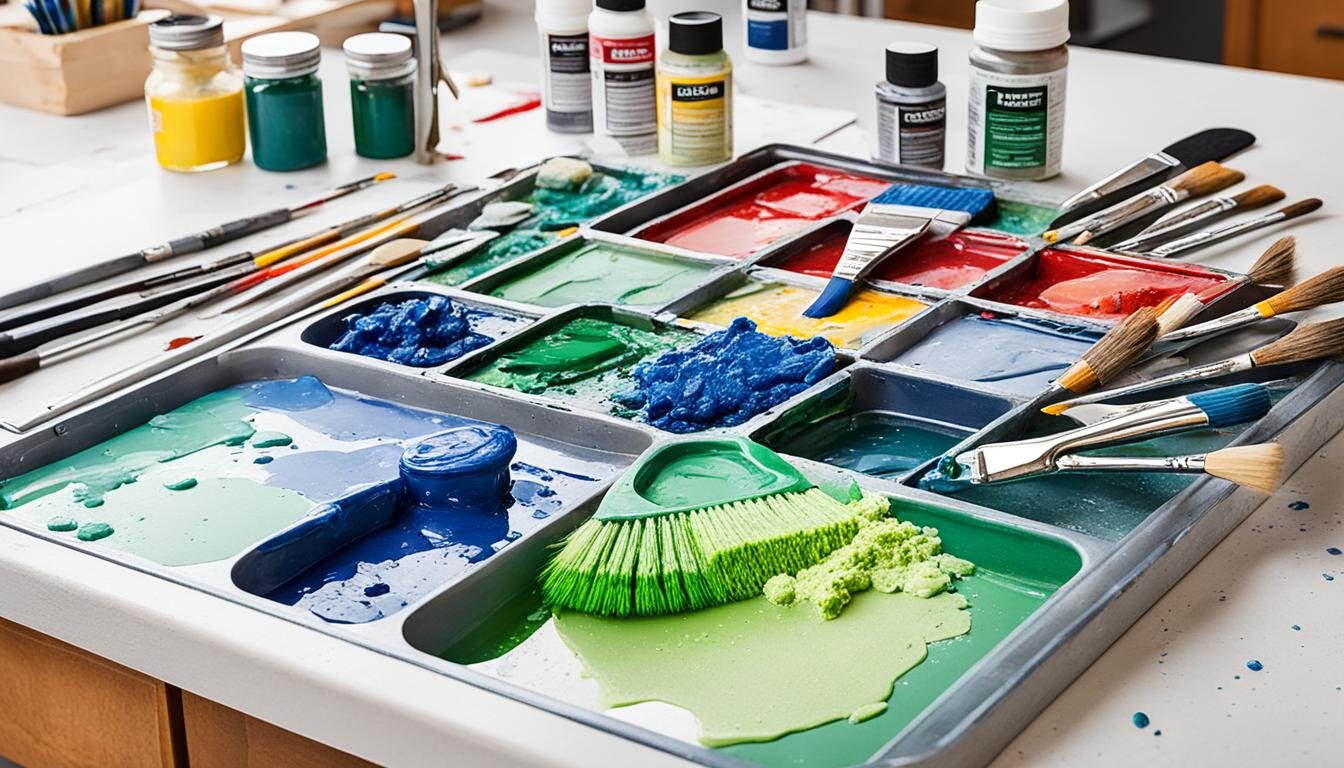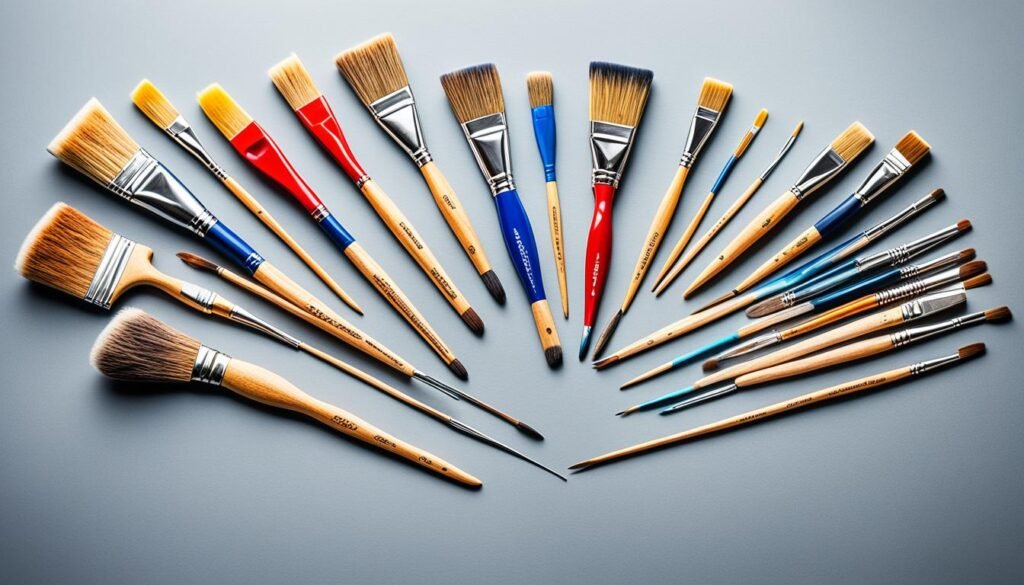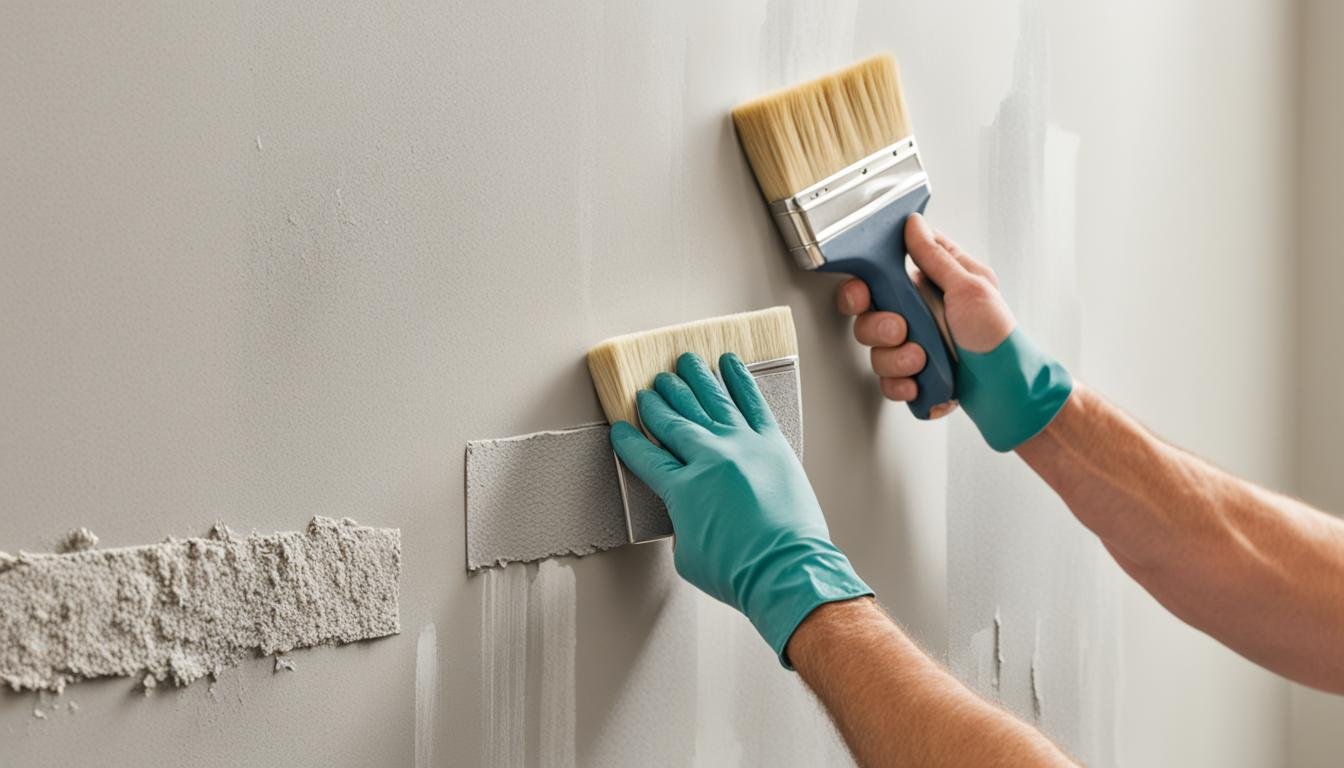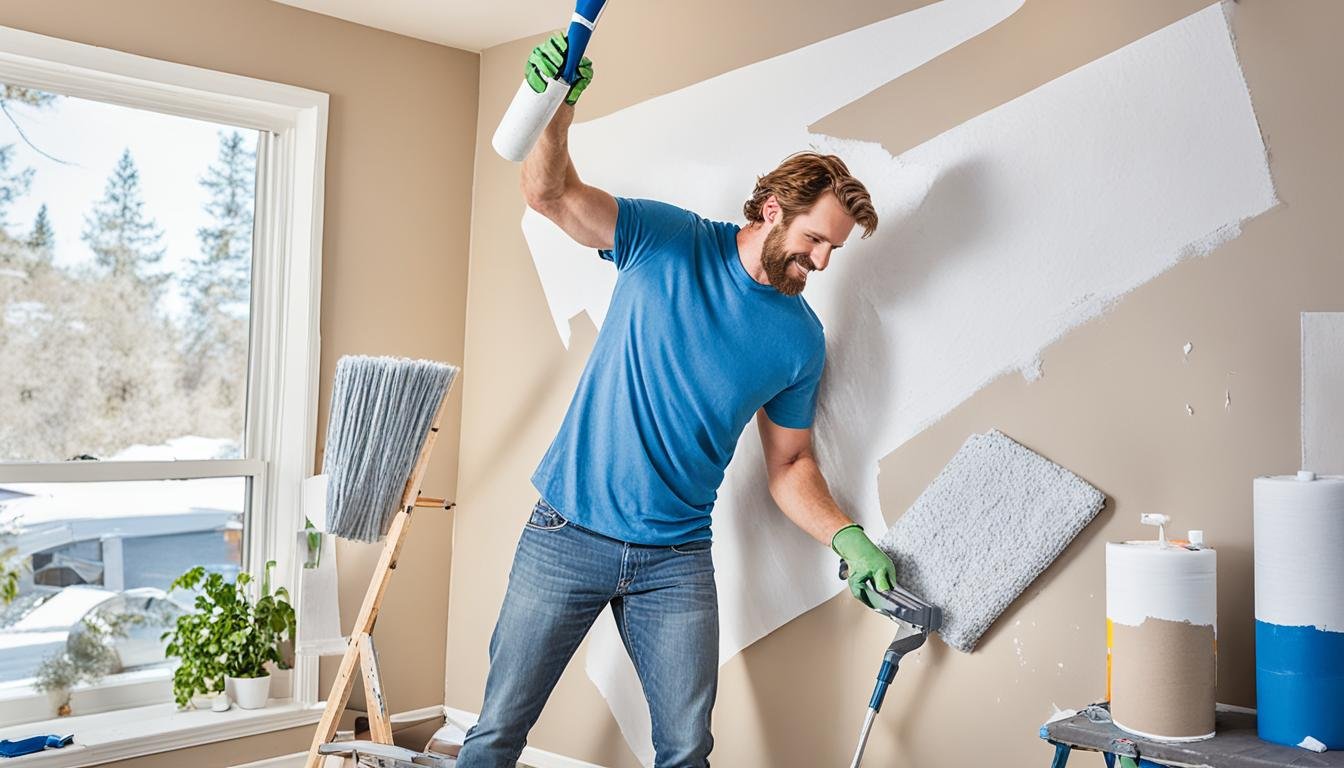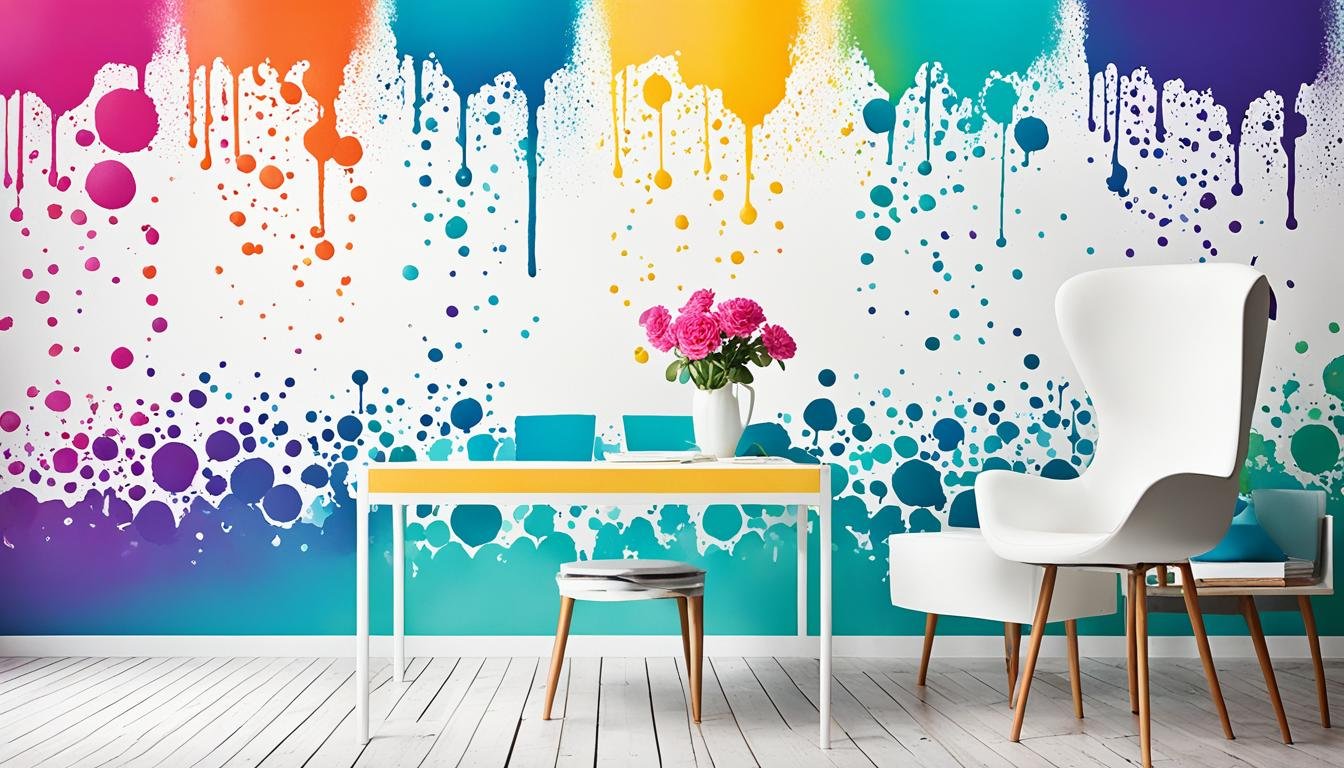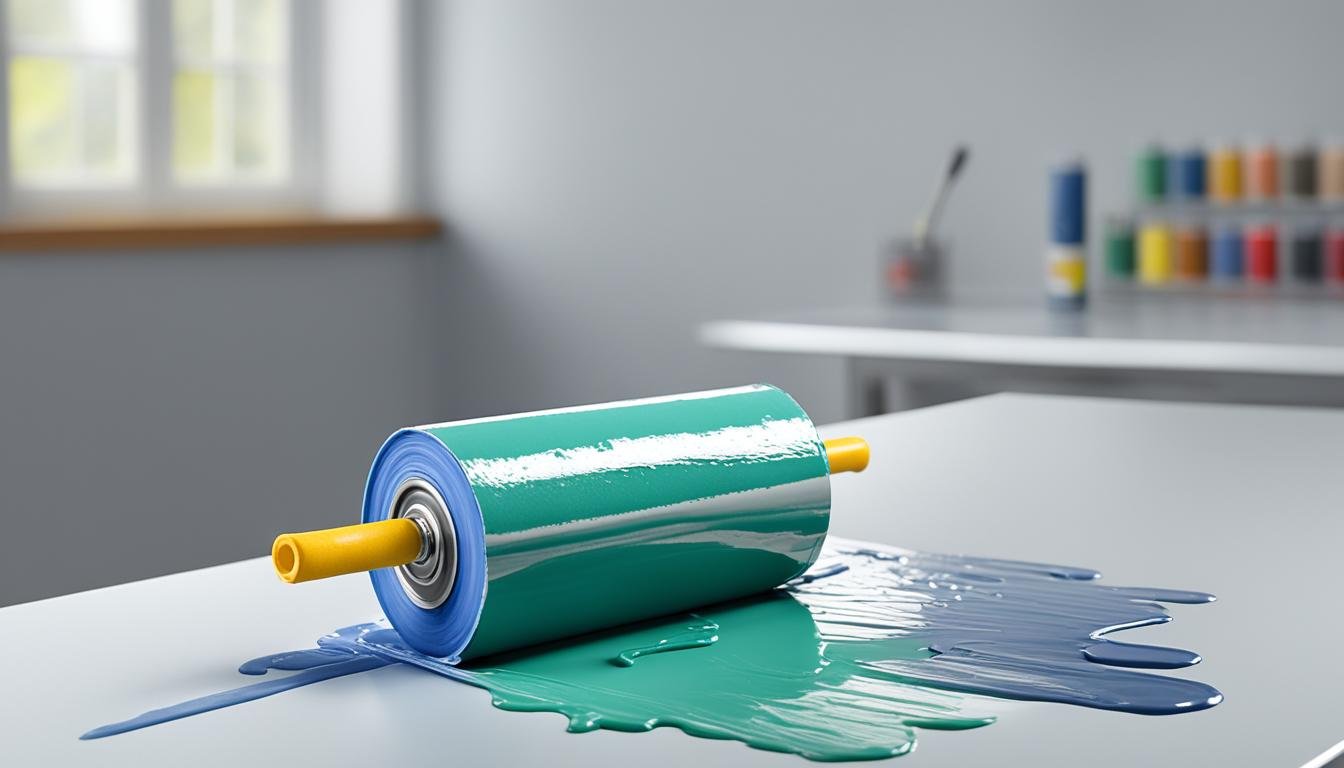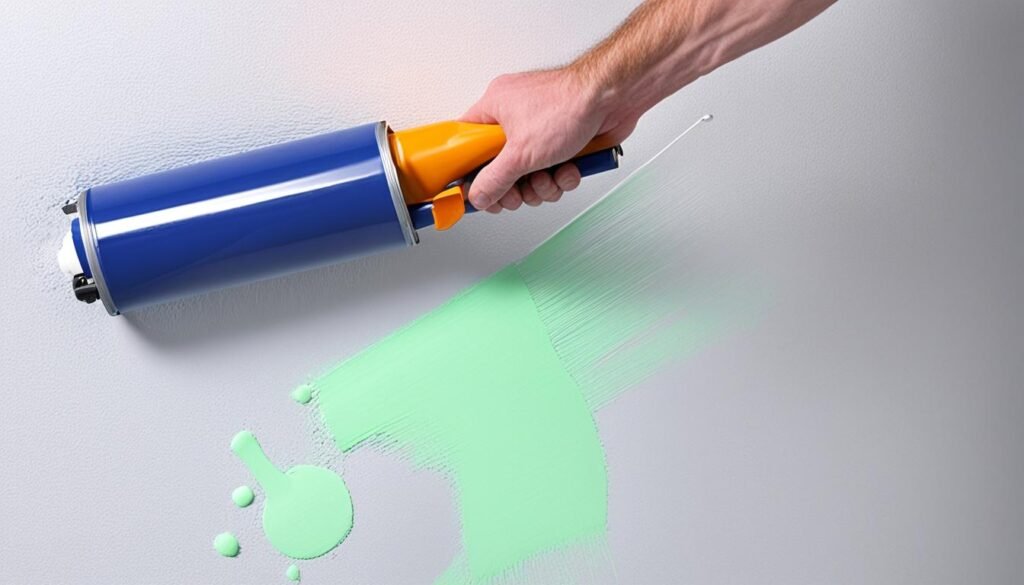Did you know that a simple exterior painting project can have a significant impact on your home’s overall appearance and value? Whether you’re looking to give your house a curb appeal enhancement, a complete exterior design makeover, or just a fresh color update, painting the exterior of your home can make a world of difference.
Not only does a fresh coat of paint instantly transform the look of your home, but it also provides protection against weathering and damage. By preserving your siding, preventing peeling and staining, and keeping excess moisture at bay, exterior painting helps maintain the long-term integrity and beauty of your home.
Key Takeaways:
- Enhancing your home’s exterior with fresh paint can greatly improve its curb appeal and increase its resale value.
- Exterior painting offers protection against weather conditions, including rain, wind, and snow.
- Painting the exterior of your home allows you to change its style and fix any existing damages.
- Hiring a professional painting company ensures high-quality work and timely completion of the project.
- Regular maintenance, including cleaning, inspections, and touch-ups, can prolong the life of your exterior paint.
The Benefits of Exterior Painting
Painting the exterior of your home offers a range of benefits. First and foremost, it provides protection against weather conditions such as rain, wind, and snow. A fresh coat of paint acts as a “force field” that can resist weather damages, prevent moisture and mold, and protect against dust and insects.
Additionally, exterior painting increases your home’s value and gives you the opportunity to change the style of your house. It allows you to transform your home’s exterior and enhance its curb appeal, making it more visually appealing and attractive to potential buyers.
Exterior painting also serves as an excellent solution to fix any damages and preserve your siding. It helps prevent issues like peeling, staining, and excess moisture, ensuring the long-term integrity and beauty of your home.
With a wide range of colors and patterns to choose from, exterior painting offers endless possibilities to express your personal style and create a lasting impression in your neighborhood. Whether you prefer a classic, timeless look or a bold, modern design, the right paint color and finish can completely transform the appearance of your home’s exterior.
By investing in exterior painting, you not only enhance the aesthetic appeal of your home but also contribute to its overall functionality and longevity. It’s a home improvement project that not only makes your house look better but also protects it from deterioration and adds value to your property.
Did you know? A well-painted home exterior can increase your property’s value by up to 5%.
The Power of Color
The choice of exterior paint colors can significantly impact the overall design and curb appeal of your home. Here are a few tips to help you make the right color selection:
- Consider the architectural style of your home and choose colors that complement its features.
- Take into account the surroundings and the colors of neighboring houses to create a harmonious look.
- Use lighter colors to make your home appear larger and more open, and darker colors to add depth and richness.
Remember, your home’s exterior is the first thing people see when they visit or pass by. Make a statement with a fresh paint job that reflects your personal style and enhances your home’s curb appeal.

Why Hire a Professional for Exterior Painting
When it comes to painting your home’s exterior, hiring a professional painting company like Local Painter Pros is a wise decision. Professionals have the expertise and experience to complete the job with high-quality work and within a specific time frame, saving you time and ensuring excellent results. They use quality materials, tools, and exterior paint to ensure long-lasting and visually appealing outcomes.
Professional painters can also help identify and address any current issues requiring repairs, such as scratches, mold, mildew, and rotting wood. By leaving the exterior paint job to the professionals, you can enjoy the practical renovation cost, enhance the paint life, and ensure that your home’s exterior stands out for all the right reasons.

Benefits of Hiring a Professional Painter
- Expertise and Experience: Professional painters have the knowledge and skills to handle different types of surfaces and provide expert advice on color selection and finishes.
- Time and Efficiency: Hiring professionals saves you time and effort as they have the necessary tools and equipment to complete the job efficiently.
- Quality Results: Professionals deliver high-quality workmanship, ensuring a smooth and even application of paint for a professional finish.
- Repairs and Preparation: Professional painters can identify and address any existing issues, ensuring proper repairs and surface preparation before painting.
- Longevity and Durability: Professional painters use quality materials and techniques that provide long-lasting results, protecting your home’s exterior from the elements.
- Insurance and Warranty: Reputable painting companies provide insurance coverage and warranties, giving you peace of mind in case of any unexpected issues.
Don’t compromise the beauty and longevity of your home’s exterior. Hire professionals for your exterior painting needs and enjoy a refreshed and stunning-looking home.
Choosing the Right Painting Company
When selecting a professional painting company, consider the following factors:
- Reputation and Experience: Look for companies with a good reputation and extensive experience in exterior painting.
- Licensing and Insurance: Ensure that the painting company is licensed and insured to protect yourself and your property.
- Portfolio and References: Check the company’s portfolio of previous work and ask for references to gauge their quality and customer satisfaction.
- Cost and Estimates: Compare quotes from multiple painting companies and consider the overall value provided, including the quality of materials, warranty, and customer service.
- Contracts and Agreements: Review all contracts and agreements carefully, ensuring that they include details such as scope of work, timelines, and payment terms.
Hiring a professional painting company will not only save you time and effort but also ensure a beautiful and durable paint job for your home’s exterior. Invest in the expertise and services of professionals, and enjoy the long-lasting results.
| Reasons to Hire a Professional Painter | Benefits |
|---|---|
| Expertise and Experience | Quality workmanship and expert advice on color selection and finishes. |
| Time and Efficiency | Saves time and effort with efficient completion of the project. |
| Quality Results | Smooth and even application of paint for a professional finish. |
| Repairs and Preparation | Identification and addressing of existing issues before painting. |
| Longevity and Durability | Use of quality materials and techniques for long-lasting results. |
| Insurance and Warranty | Insurance coverage and warranties for added peace of mind. |
Conclusion
In conclusion, enhancing your home’s exterior with fresh paint is a valuable investment that can significantly improve its curb appeal, protect it from weathering and damage, and increase its resale value. Painting your home’s exterior offers aesthetic benefits, helps preserve siding, prevents peeling and staining, and enhances the overall appearance of your house.
By hiring a professional painting company like Local Painter Pros, you can ensure high-quality work and timely completion of the project. Professionals have the expertise and experience to choose the right exterior paint, prepare the surfaces properly, and apply it evenly. They also use top-quality materials and tools that will stand the test of time, ensuring a long-lasting and visually appealing finish.
To maintain the longevity and beauty of your painted home exterior, it’s important to follow proper maintenance practices. Regular cleaning, inspections, and touch-ups can help prolong the life of your exterior paint. By also addressing any issues promptly, such as mold or rotting wood, you can prevent further damage and keep your home looking fresh and attractive for years to come.
FAQ
How often should I paint the exterior of my home?
The frequency of exterior painting depends on several factors, including the type of paint used, the quality of the previous paint job, and the local climate. In general, it is recommended to repaint your home’s exterior every 5-10 years. However, if your paint is chipping, peeling, or fading, it may be time to repaint sooner.
What are the benefits of painting the exterior of my house?
Painting the exterior of your house offers numerous benefits. It can significantly enhance the curb appeal of your home, making it more visually appealing. It also protects your home from weather damage, such as moisture and rot. Additionally, it provides an opportunity to update the style of your house and fix any existing damages on the exterior.
Can I paint the exterior of my home myself?
While it is possible to paint the exterior of your home yourself, hiring a professional painting company is recommended for the best results. Professionals have the expertise, experience, and tools to ensure a high-quality finish and timely completion of the job. They can also help identify and address any underlying issues that may require repairs before painting.
How long does it take to paint the exterior of a house?
The time it takes to paint the exterior of a house depends on several factors, including the size of the house, the condition of the existing paint, and the weather conditions. On average, it can take anywhere from a few days to a few weeks to complete an exterior paint job.
How do I choose the right color for my home’s exterior?
Choosing the right color for your home’s exterior is a personal decision. It is important to consider factors such as the architectural style of your home, the neighborhood, and your personal preferences. You can also consult with a professional painter or utilize online tools and resources to visualize different color options before making a decision.
Will painting my home’s exterior increase its resale value?
Yes, painting the exterior of your home can increase its resale value. A fresh coat of paint enhances curb appeal, making your home more attractive to potential buyers. It also gives the impression that your home has been well-maintained and cared for, which can positively impact its perceived value.


